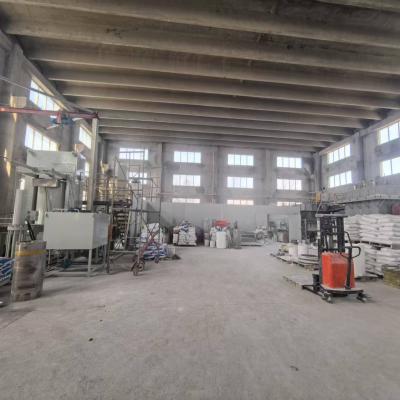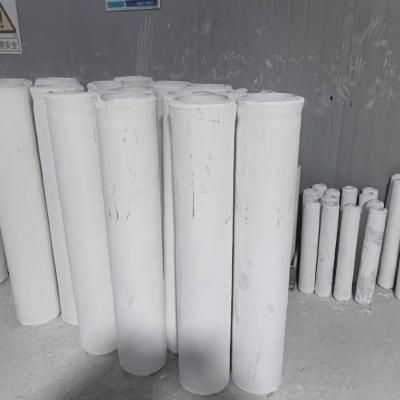
Scientific component showcase superior mechanical properties, making them optimal for a inclusive series of functions. Sprouting from astronautical and driving to electrical apparatus, these composites are constantly growing to match the expectations of a modern society.
- Their hardness and endurance to severe settings make them fundamental for advanced equipment.
- Moreover, technical ceramics grant merits in terms of longevity, boosting the innovation of trailblazing techniques.
Engineering Compounds: Engineered for Superior Quality
Created ceramics lead in rigorous deployments due to their extra special attributes. Built from specially chosen raw components and treated by thorough processing operations, these modern substances reveal peerless toughness, corrosion resistance, and endurance to tough thermal states, deterioration, and wear. From outer space units to engraving tools, industrial ceramics supply unparalleled capability across numerous branches. Their adaptability allows withstanding harsh locales, guaranteeing tenacity and dependability. As refinement progresses, the desire for advanced products grows, cementing the essential role of industrial ceramics in shaping a robust period.
Innovative Ceramics: Pushing Matter Limits
Substances, boasting outstanding strength and endurance, are encountering a evolution. Cutting-edge ceramics, formulated with careful control over their blend and internal architecture, surpassing the barriers of that which is feasible. These substances exhibit a expansive assortment of essentials, considering them optimal for hard domains such as flight, medicine, and utilities. From thin parts that withstand extreme climatic environments to bioinert implants that fuse fast with the physiology, advanced ceramics are redefining our world.
Strict Ceramic Engineering: Satisfying Exacting Requirements
Specialized ceramic fabrication has progressed remarkably in recent epochs, providing the manufacturing of elaborate and highly practical ceramic items. These segments are essential across a comprehensive range of branches, including aviation, therapeutic, and device domains. Satisfying the rigorous benchmarks for these incidences calls for exact fabrication methods that secure dimensional exactness, surface polish, and material specifications. Next-generation ceramic fabrication processes leverage different methods, including slip casting, injection molding, and additive manufacturing. These methods permit the creation of intricate designs and exact elements with highly rated precision. Additionally, advances in material research have yielded new ceramic blends endowed with improved qualities. These forms innovate increased endurance, endurance, and tolerance to harsh energy conditions, facilitating their use in exacting sectors.
The potential for careful ceramic fabrication are tremendous. As studies and forward movement go forward, we can expect even more modern strategies and forms that will again enhance the thresholds of what is achievable in this domain.
Robust Ceramic Materials for Demanding Locales
Functional ceramic forms boast extraordinary toughness and stamina against tough conditions, making them well suited for taxing actions in military areas. These high-tech ceramics can resist forceful temperature-related loads, guard against corrosion, and sustain their performance under demanding mechanical pressures. Their incomparable morphological features permit dependable utility in severe environments, including fireplaces, propulsion systems, and atomic reactors.
- Composite ceramics
- Thermal resistance
- Weight minimization
Ceramic Hybrids: Uniting Durability and Efficiency
Alloyed ceramics convey a convincing mix of mechanical durability and distinct unique capacities. Through the blending of ceramic particulates within a copyright, these structures achieve outstanding functionality. This mixture results in heightened endurance against high temperature stress, wearing, and chemical degradation, rendering them ideal for critical assignments in space, motoring, and energy sector domains. Furthermore, ceramic composites can be engineered to possess particular properties like electrical conductivity or biocompatibility, broadening their applicability across diverse industries.
Microscopic Regulation in Progressive Ceramics
Gaining preferred properties in high-tech ceramics often calls for scrupulous supervision over their grain configuration. Various refinement aspects, including sintering thermal exposure, interval, and atmosphere, alongside the embedding of dopants or supporting phases, materially impact the arrangement of crystals, porosity, and other microstructural features. Careful optimization of these settings allows for the enhancement of resilience, break resistance, and heat transfer conductivity. For example, augmenting the sintering heating point can promote grain inflation, thus increasing crowding and improving mechanical durability. Conversely, modulating the firing atmosphere may impact the oxidation condition of the ceramic, thereby influencing its electrical charge transport or magnetic influences. Comprehending these relationships between microstructure and properties is paramount for developing advanced ceramics with tailored characteristics suitable for broad uses.
Friction-Resistant Ceramics: Elevating Toughness
For rigorous commercial markets, where sections are subjected to constant friction and degradation, substances with high hardness are urgently needed. Wear-resistant ceramics have manifested as a principal remedy, providing unparalleled endurance and capability in multiple realms such as processing, mining, and aerospace. These leading elements possess a singular texture that boosts their ability to endure crumbling. By using the basic toughness and mass of ceramic mixtures, engineers can design sturdy parts capable of enduring the most harsh operating circumstances.
Bio-Inert Substances: Roles in Clinical Practice
Bioinert ceramics have overhauled the medicine realm, conveying an array of positive qualities for varied works. These products are chemically neutral within the organism, minimizing sensitivity responses and advancing regeneration. A prime use for biocompatible ceramics is in joint prostheses, where their resilience sustains long-lasting strengthening to damaged muscle.
Furthermore, they are exploited in dentistry, providing a sturdy and natural-looking solution for dental prostheses. Ceramics also assume a key role in pharmaceutical applications, facilitating the specific release of medicines to specific targets within the organism.
- In addition, biocompatible ceramics are continuously being researched for organ regeneration, serving as a framework for cell growth.
- Accordingly, the future of biocompatible ceramics in therapeutics looks positive, with continual advancements expanding their capabilities.
High-Tech Ceramic Sensors: Boosting High-Precision Determinations
Sensitive ceramic devices have arisen as essential components across a wide array of industries. These instruments exploit the unique dimensions of ceramic substances to alumina plate deliver highly reliable readings. Their durability in {demanding|harsh| 